Description
ABSTRACT
Perfume extraction refers to the extraction of aromatic compounds from raw materials, using methods such as distillation, solvent extraction, expression or enfleurage. The extracts are either essential oils, absolutes, concretes, or butters, depending on the amount of waxes in the extracted product. Heat, chemical solvents, or exposure to oxygen in the extraction process denature the aromatic compounds, either changing their odour, character or rendering them odourless. In this work three methods, solvent extraction, hydro distillation and enfleurage methods were used to extract essential oil from lemongrass. Solvent extraction method yielded 2.08, enfluerage method yielded 1.96 and hydro distillation methods yielded 0.95 essential oil respectively. From the analysis solvent extraction gave the highest yield because of the less exposure air and heat and this conform the literature value. The extracted essential oil was formulated into perfume using a fixative and carrier solvent.
CHAPTER ONE
INTRODUCTION
1.1 Background
Perfume is a fragrant liquid made from an extract that has been distilled in alcohol and water.
Since the beginning of recorded history, humans have attempted to mask or enhance their own odor by using perfume, which emulates natures pleasant smells. Many natural and manmade materials have been used to make perfume to apply to the skin and clothing, to put in cleaners and cosmetics, or to scent the air. Because of differences in body chemistry, temperature, and body odors, no perfume will smell exactly the same on any two people.
Perfume comes from the Latin per meaning through and fume, or smoke. Many ancient perfumes were made by extracting natural oils from plants through pressing and steaming. The oil was then burned to scent the air. Today, most perfume is used to scent bar soaps. Some products are even perfumed with industrial odorants to mask unpleasant smells or to appear unscented.
While fragrant liquids used for the body are often considered perfume, true perfumes are defined as extracts or essences and contain a percentage of oil distilled in alcohol.
Techniques involved in perfume extraction from plants include; solvent extraction, distillation and effleurage method. These methods to a certain extent, distort the odor of the aromatic compounds that are obtained from the raw materials.
Important thing in relation to perfume making is that there are three key ingredients you will need to produce perfume:
1. Essential Oils these have been extracted from various plants organic or nonorganic and when combined give the smell of the perfume you are trying to produce.
2. Pure Grain Oil
3. Water
1.2 LEMONGRASS
Family: Poaceae Gramineae, Cymbopogon species
The genus has about 55 species, most of which are native to South Asia, Southeast Asia and Australia. Two major types have considerable relevance for commercial use: East Indian lemongrass Cymbopogon flexuosus is native to India, Sri Lanka, Burma and Thailand, whereas West Indian lemongrass Cymbopogon citratus is assumed to originate in Malaysia. The plants grow in dense clumps up to 2 meters in diameter and have leaves up to 1 meter long. Further Cymbopogon martini Roxb. J.F. Watson var. martini, which is native to India and cultivated in Java isworth mentioning as it also grows in Bhutan and is extracted for palmarosa oil. Another species with commercial relevance is citronella grass Cymbopogon winterianus Jowitt which also stems from India, but is today grown throughout the tropics.
1.3 STATEMENT OF PROBLEMS
The problem of perfume extraction process is the distortion of the odor of the aromatic compounds obtained from the raw materials. This is due to heat, harsh solvents and also through the exposure to oxygen which will denature the aromatic compounds. These will either change their odor, character or render them odorless.
The problem of formulation of perfume involves knowing the proportion in which essential oil, and other materials to be mixed to avoid skin irritation and increase the intensity and longevity of the perfume.
Most imported perfumes are synthetic odorant which are not pure chemical substance but are mixture of organic compounds that are harmful when applied.
There are limited perfume plants, from which perfume can be made; this can lead to importation of perfume thereby causing the decline of foreign reserves and unemployment.
1.4 OBJECTIVE OF PROJECT
The main objective of this project is to extract and formulate perfume from Lemon grass CYMBOPOGON FLEXUOSUS.
1.5 JUSTIFICATION/SIGNIFICANCE OF THE STUDY
This project focuses on the production of perfumes from natural/plant sources as against synthetic chemicals thereby will reduce any side effect resulting from synthetic chemicals.
The success of this work will stimulate the development of the perfume industry locally because of available, cheap raw materials.
More jobs will be created by those that will be engaged in planting/cultivating of the plant as well as establishing small scale extraction plants.
There will be reduction on the resources spent on importation of lemon grass fragrance by end users.
1.6 SCOPE OF THE WORK
This project work is on how perfumes are extracted and formulated from lemongrass. It further entails;
1. The synthetic and aromatic sources of perfumes.
2. The composition of perfumes and its concentration
3. The extraction methods and formulation process involved
4. The economic importance of lemongrass and the uses of lemongrass oil in perfume production process.

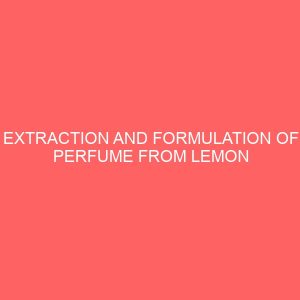

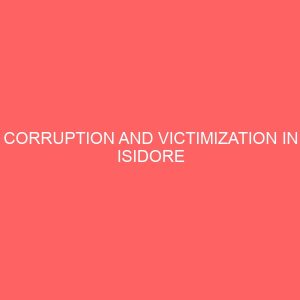
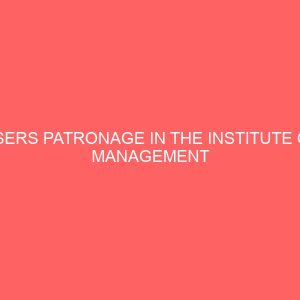
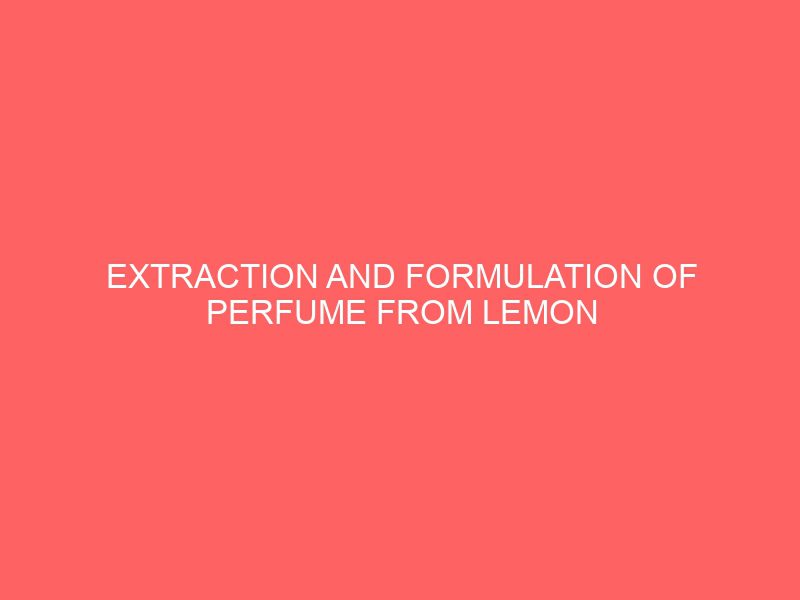
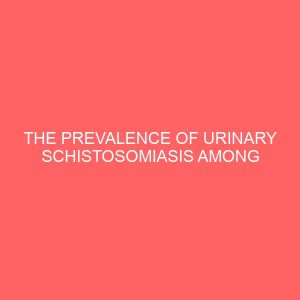
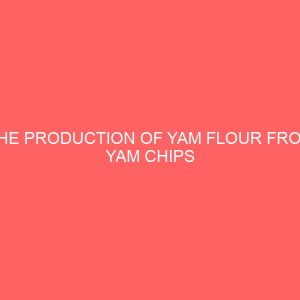
Reviews
There are no reviews yet.